Toyota Corolla Cross Vs Volkswagen Taos: Which Small SUV Is Right For You?

The past several years has seen a veritable explosion in the number of handsome, practical, small-but-full-featured crossover utility vehicles on the market.
It’s no longer the case that you must shell out the big bucks for the biggest, most opulent, most top-of-the-line SUV in the lineup to get the good stuff. These days, even the least-expensive utility vehicles typically offer premium audio, mobile phone connectivity, and loads of active safety equipment.
Get a Quote on a New Toyota Corolla Cross or Volkswagen TaosCase in point: the Toyota Corolla Cross and Volkswagen Taos. Brand new for 2022 in the North American market, these two compact five-door crossovers are loaded with multimedia goodies, active driver assists, and more space and practicality than its diminutive footprint might lead you to believe. But how do the two really stack up? Let’s take a look as we compare the Toyota Corolla Cross vs Volkswagen Taos.
Toyota Corolla Cross vs Volkswagen Taos: Styling
Toyota Corolla Cross: The 2022 Toyota Corolla Cross looks thoroughly “Toyota,” with proportions and a character that readily recall the RAV4. It’s angular and a bit on the “aggressive” side, with an angry scowl framed by two piercing eye-shaped headlamps, and a moderate helping of rugged-looking black plastic cladding. Overall, it perhaps looks more cunning than a 2.0L-powered compact crossover with a CVT has any right to, but that’s not a bad thing.
Inside, the Toyota Corolla Cross is a bit more forgettable. The dash and center stack are perfectly attractive and tidy, with a big, floating infotainment touchscreen that keeps the driver’s eyes from having to wander too far down, but it’s all very much standard Toyota – nothing to write home about.
Volkswagen Taos: Volkswagen’s current design language does a good job of bringing the company’s aesthetic tradition into the 21st century, and that’s on full display with the Taos. It’s a handsome, chiseled vehicle with a strong, relatively blocky design, and it looks upscale and carries plenty of presence with its broad, straight grille and its commanding profile. The character lines are similarly straight and simple, which is a good thing; it leaves the Taos looking tidy and well-groomed.
In the cabin, things are decidedly less tidy, with a busier-looking center stack than many of the Taos’s competitors, but everything is at least nicely organized and easy to navigate. And if you’re driving, the digital instrument panel is going to command most of your attention anyway; it’s a very nice display. The dashboard, the door skins, and even the seats are arguably a bit too bold and futuristic to be welcoming, but the materials are nice enough for the price point.
Bottom Line: It’s an unusual day when the German car has less pretense in its design than the Japanese competitor, but that might actually be the case here. We wouldn’t call the Corolla Cross “overwrought,” but it has a level of aggression that doesn’t align with its actual character – a problem the more simple-looking Taos doesn’t have. Of course, there are plenty of buyers for whom the Toyota’s relatively angry looks will resonate.
Technology and Features
Toyota Corolla Cross: Semiconductor shortage or not, the Toyota Corolla Cross is stuffed full of high-tech features at every trim level. Most notable of all: Toyota Safety Sense 2.0 is standard on all models. TSS 2.0 is a full suite of active driver assist features including pre-collision alert with pedestrian technology, lane-departure warning with steering assist, lane-tracing assist, automatic high beams, and radar cruise control with a road sign assist system. Also included on every model are lane-keep assist, tire pressure monitoring, and an anti-theft system with engine immobilizer. Blind-spot monitoring and rear cross-traffic alert are standard only on the mid-tier LE and top-tier XLE models.
SEE ALSO: 2022 Toyota Corolla Cross Second Drive Review: What’s in a Name?The Corolla Cross does all right in the multimedia department, too, with a standard 7.0- or 8.0-inch touchscreen infotainment system, depending on trim, and standard Apple CarPlay, Android Auto, and Amazon Alexa compatibility. You’ll have to go beyond the entry-level Corolla Cross L to get the really good stuff, however. The LE and XLE both offer an optional nine-speaker JBL audio system with a subwoofer and amplifier, available only with a moonroof package.
Volkswagen Taos: The moment you climb into the Volkswagen Taos, you’ll be greeted by what might be its most obvious standard tech feature: VW’s Digital Cockpit instrument panel, which replaces the traditional analog gauges with a configurable high-definition 12.3-inch LCD screen. The standard infotainment system boasts a 6.5-inch touchscreen with Apple CarPlay and Android Auto, and shelling out for the premium sound system unlocks eight-speaker Beats Audio.
Volkswagen’s IQ.DRIVE, the closest thing the German automaker offers to Toyota’s Safety Sense, is an optional extra on the entry-level Taos S and mid-tier SE. But at $895 or $995 depending on trim, it’s not unreasonably priced, and it’s no less feature-rich than Toyota’s system. IQ.DRIVE encompasses VW’s adaptive cruise control, blind-spot monitoring, rear traffic alert, frontal collision assist, emergency assist, and lane-keeping assist. It also includes a semi-smart automated cruising system that Volkswagen calls Travel Assist – akin to Nissan’s Intelligent Cruise Control, Hyundai’s Smart Cruise, or any number of similar systems.
Bottom Line: Both the Corolla Cross and the Taos are surprisingly feature-rich for their respective price points, and truly, you can’t go wrong with either. Remember when the typical standard head unit in a brand-new vehicle had a small seven-segment screen like a digital wristwatch from the ‘80s? Because that wasn’t that long ago.
That Toyota has reserved blind-spot monitoring and rear cross-traffic alert for the top-tier Corolla Cross XLE is a bit of an annoyance, but if you can overlook that, the Toyota narrowly edges out the Volkswagen in terms of technology and features. The inclusion of Toyota Safety Sense 2.0 as standard equipment across the entire model range was a smart decision. That said, there will be those who are naturally drawn to the Taos’s impressive Digital Cockpit, and we can’t necessarily blame them; it’s a great display, and the customization options are remarkably helpful for tailoring the screen to suit your needs.
Safety
Toyota Corolla Cross: The 2022 Toyota Corolla Cross has earned a Top Safety Pick Plus title from the Insurance Institute for Highway Safety, or IIHS, achieving top marks for crashworthiness in all categories and good ratings for its high-trim headlights and frontal crash mitigation system. A Top Safety Pick Plus award is the IIHS’s highest honor, and it suggests that not only has the Corolla Cross been engineered to protect its occupants in a crash, but to help lessen the risk of having an accident in the first place.
Volkswagen Taos: The Volkswagen Taos didn’t perform as well as we had hoped in IIHS testing, managing top scores in most crashworthiness categories, but only an “Acceptable” rating in the passengers side small-overlap frontal crash test, and an Acceptable rating for its head restraints and seats. The frontal crash mitigation system was rated “Good” when it came to preventing a vehicle-to-vehicle accident, but only Acceptable when it came to avoiding pedestrians.
Bottom Line: In the battle of the Toyota Corolla Cross vs Volkswagen Taos, it’s the Toyota we declare the winner when it comes to safety. On paper, both crossovers appear to have a lot of overlap when it comes to active driver assistance features, but in the event of a crash, the Toyota holds the advantage.
Toyota Corolla Cross vs Volkswagen Taos: Powertrain
Toyota Corolla Cross: The beating heart of Toyota’s new compact Corolla Cross is a 2.0-liter DOHC four-cylinder gasoline engine capable of up to 169 horsepower and 151 lb-ft of torque. Those aren’t record-breaking figures, but they’re strong for such a fuel-efficient four-pot of that size, and the fact that Toyota continues to stand by its naturally aspirated engines is a breath of fresh air in a world that seems determined to downsize and turbocharge absolutely everything. It’s paired here with a continuously variable transmission (CVT), with front-wheel drive fitted as standard. All-wheel drive is available as an option across the entire range.
Volkswagen Taos: Volkswagen’s Taos is propelled by a stout, turbocharged 1.5-liter inline-four, good for a max of up to 158 horsepower and 184 lb-ft. Curiously, VW has opted to offer two different automatic transmissions with the mill – a conventional planetary-gearset automatic with eight speeds for the front-wheel-drive Taos, and a seven-speed dual-clutch auto for the AWD version. Here too, front-wheel drive is standard on the two lower trim levels, with AWD available as an option. Previously, a FWD version of the top-of-the-line SEL Taos was offered, but it’s been discontinued in North America.
Bottom Line: The powerplants in both the Toyota Corolla Cross and the VW Taos are remarkably close on paper, Toyota’s 2.0L having a slight edge in the power department, while the Taos’s 1.5L turbo wins out on torque. In real world driving, the Taos feels much more powerful than the Toyota.
There’s substantially more separation between the two in the transmission department. Do you prefer the smooth, uninterrupted power delivery of a CVT, or the rapid response available with the Taos dual-clutch transmission? For front-wheel drive models, the clear answer is the Taos and its 8-speed automatic. But for all-wheel drive models, the choice is less clear as each vehicle’s transmission has its pros and cons.
Fuel Economy
Toyota Corolla Cross: The FWD Toyota Corolla Cross leverages its highly efficient 2.0L four-cylinder and CVT to achieve 31 miles per gallon in the city, and 33 mpg on the highway, according to testing, for a combined 32 mpg fuel economy rating overall. Predictably, AWD models come up just a bit shy of that; the Corolla Cross XLE musters 29 mpg in the city and 32 mpg on the highway, for a combined fuel economy rating of 30 mpg.
Volkswagen Taos: VW’s new Taos weighs only a bit more than the Corolla Cross, but its automatic transmission choices mean you end up paying a penalty at the pump relative to the CVT-equipped Toyota. The FWD Taos manages just 31 mpg combined, from 36 mpg highway and 28 mpg city, while the AWD version delivers just 25 city, 32 highway, and 28 combined mpg.
Bottom Line: Neither crossover is bad by any stretch, but the Toyota Corolla Cross is the clear winner when it comes to fuel economy. Sure, one or two mpg doesn’t sound like much, but it all adds up over the life of the vehicle.
Cabin Space
Toyota Corolla Cross: You know what they say: one man’s 1,200-square-foot ranch is another man’s castle. How much passenger space is “enough” is a highly subjective matter, but we would classify the Corolla Cross as “sufficient” by most objective standards. The compact crossover offers up to 94.9 cubic feet of passenger space, with as much as 39.5 inches of headroom up front and 39.1 inches in the back. Leg room is more ample at 42.9 inches for front-row occupants, although rear-seat passengers will have to make do with a mere 32.0 inches of leg stretching space. The back row is more suitable for kids, if we’re honest, and shoulder and hip room can feel a bit more cramped than in some of the Corolla Cross’s competitors.
Volkswagen Taos: The Taos feels plenty roomy for its exterior dimensions, with a spacious 40.7 inches of headroom for front-row occupants and as much as 39.8 inches for the second row. Passenger volume in general is more generous than in the Corolla Cross, measuring at 99.5 cubic feet, and the 37.9 inches of second-row legroom means that the Taos can fit five adults in moderate comfort (your mileage may vary). Shoulder room is quite ample, as well, with up to 56.5 inches front and 55.2 inches rear, all of which leaves the Taos feeling surprisingly un-cramped for a crossover utility vehicle with such a diminutive footprint.
Bottom Line: The Volkswagen Taos is the clear winner when it comes to cabin space, besting the Toyota Corolla Cross in nearly every single category. It’s a testament to VW’s talent with efficient packaging that such a small compact vehicle can offer this much room to spread out, and while we wouldn’t call the Corolla Cross “cramped,” if you regularly have adults in the second row of your vehicle, the Taos is more well-suited to your needs.
Cargo Capacity
Toyota Corolla Cross: The Corolla Cross offers up to 26.5 cubic feet of cargo volume behind the rear seats, making it neither the most capacious nor the most space-limited vehicle in the segment. Fold the rear seats down, however, and the total jumps to 66.8 cubic feet, which is enough to haul all manner of things – tools, home improvement supplies, impulsive yard sale furniture purchases, etc. – with relative ease.
Volkswagen Taos: Testifying again to Volkswagen’s efficient use of space, the Taos offers more trunk cargo capacity than the Corolla Cross at up to 27.9 cubic feet. Folding the second row flat makes that figure swell to 65.9 cubic feet – a bit less than the Corolla Cross, but not enough to significantly impact your ability to clean out your local home improvement store.
SEE ALSO: 2022 Volkswagen Taos SEL AWD Review: Practical and PremiumBottom Line: Which is more important: space behind the rear seats, or space with the second row folded flat? We’re not sure. Frankly, we consider the contest of cargo capacity a wash between the Toyota Corolla Cross and the Volkswagen Taos; both offer approximately the same cargo capacity, and neither is liable to leave you feeling starved for space.
Pricing
Toyota Corolla Cross: The Corolla Cross is priced very competitively among compact crossover utility vehicles, with a starting MSRP of just $22,445 for the base L trim. Tacking on all-wheel drive won’t set you back too much, either; the option adds just $1,300 onto the purchase price, which is less even than what Toyota charges for the premium JBL audio infotainment package. At the top of the range, you have the Corolla Cross XLE, which starts at $26,575 and stretches just above $30k by the time you add AWD and the Audio Plus package encompassing a power liftgate, moonroof, JBL audio, and adaptive headlights.
Volkswagen Taos: The Volkswagen Taos, which replaces the Golf in the US market, carries a similar starting price of $23,495. That’s more than the Corolla Cross, but not so much so that it makes one or the other the obvious pick. Of course, that’s for the base S trim, in which case you’ll have to tack on another $995 for IQ.DRIVE if you want active driver assistance systems. All-wheel drive is more expensive in the Taos, too, requiring $1,450 to $2,045 extra depending on the trim level, although that’s understandable given the switch from a planetary automatic to a dual-clutch unit. At the top is the Taos SEL, which starts at $33,645 with standard AWD, just eclipsing $35k by the time you add a panoramic moonroof and enhanced rearview mirror.
Bottom Line: Volkswagen has long occupied the space between the budget and luxury brands in North America, so it’s little surprise that the Taos is more expensive than Toyota’s similarly well-equipped Corolla Cross. It’s not as though you aren’t getting anything for your money, of course; to many customers, the build quality and handsome styling alone will be well worth the price premium. But if you are in the market specifically for a decked-out, top-trim-level compact crossover with all the bells and whistles for the lowest price, the Corolla Cross is the winner.
Toyota Corolla Cross vs Volkswagen Taos: In Conclusion
The battle of the Toyota Corolla Cross vs Volkswagen Taos is a glance, pretty evenly matched. They’re sized similarly, they have similar curb weights, and both pack similar levels of engine power. They’re priced similarly, to boot, although predictably, the Volkswagen can get substantially more expensive the moment you start climbing the trim level ladder or tacking on optional extras.
It all comes down to one’s priorities. The Taos is the more premium feeling, spacious, better driving vehicle, but it also comes at a more premium price. The Corolla Cross is more value packed, fuel efficient choice that includes enhanced safety at a lower price. Hard to go wrong with either.
Become an AutoGuide insider. Get the latest from the automotive world first by subscribing to our newsletter here.

Aaron is a freelance writer, videographer and car enthusiast based out of the Detroit area. He has a special affinity for the Porsche 944 series, and once owned a Volvo 240 sedan with a Weber carb in place of the factory EFI system. His work has appeared on AutoGuide, GM Authority, /Drive, and VW Vortex, among other sites.
More by Aaron Brzozowski



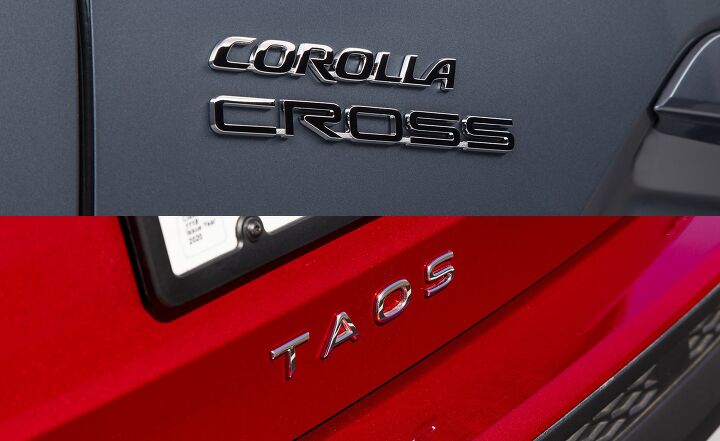
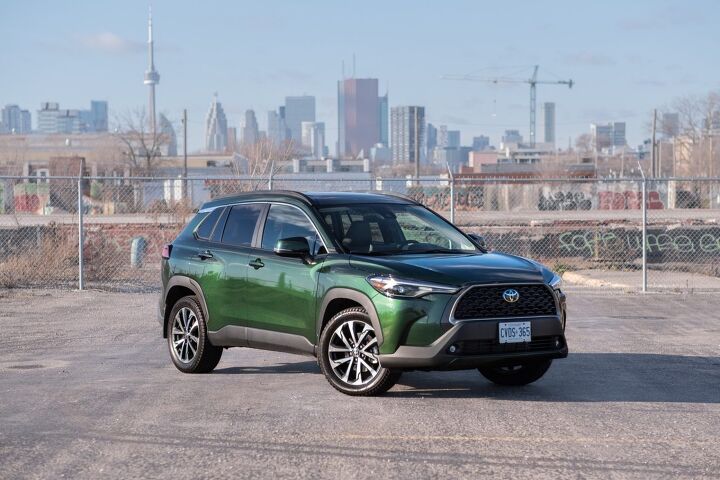






























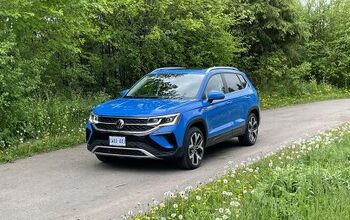
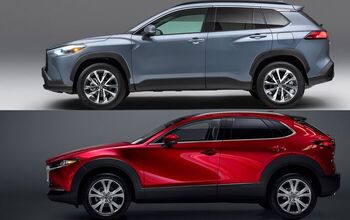
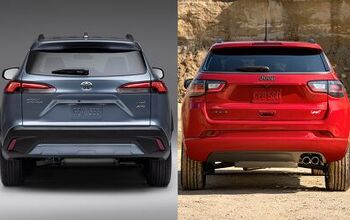

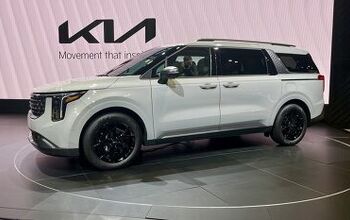




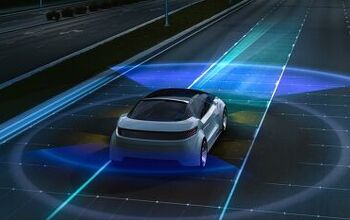


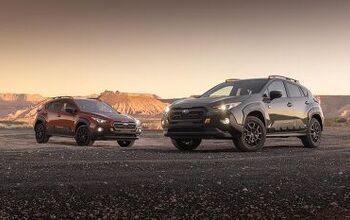
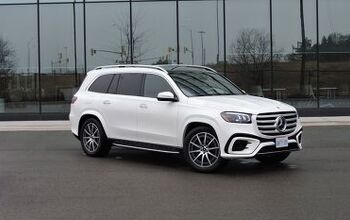
Comments
Join the conversation
I'm currently driving a 2007 Camry Hybrid and would love a Plug-in Hybrid.